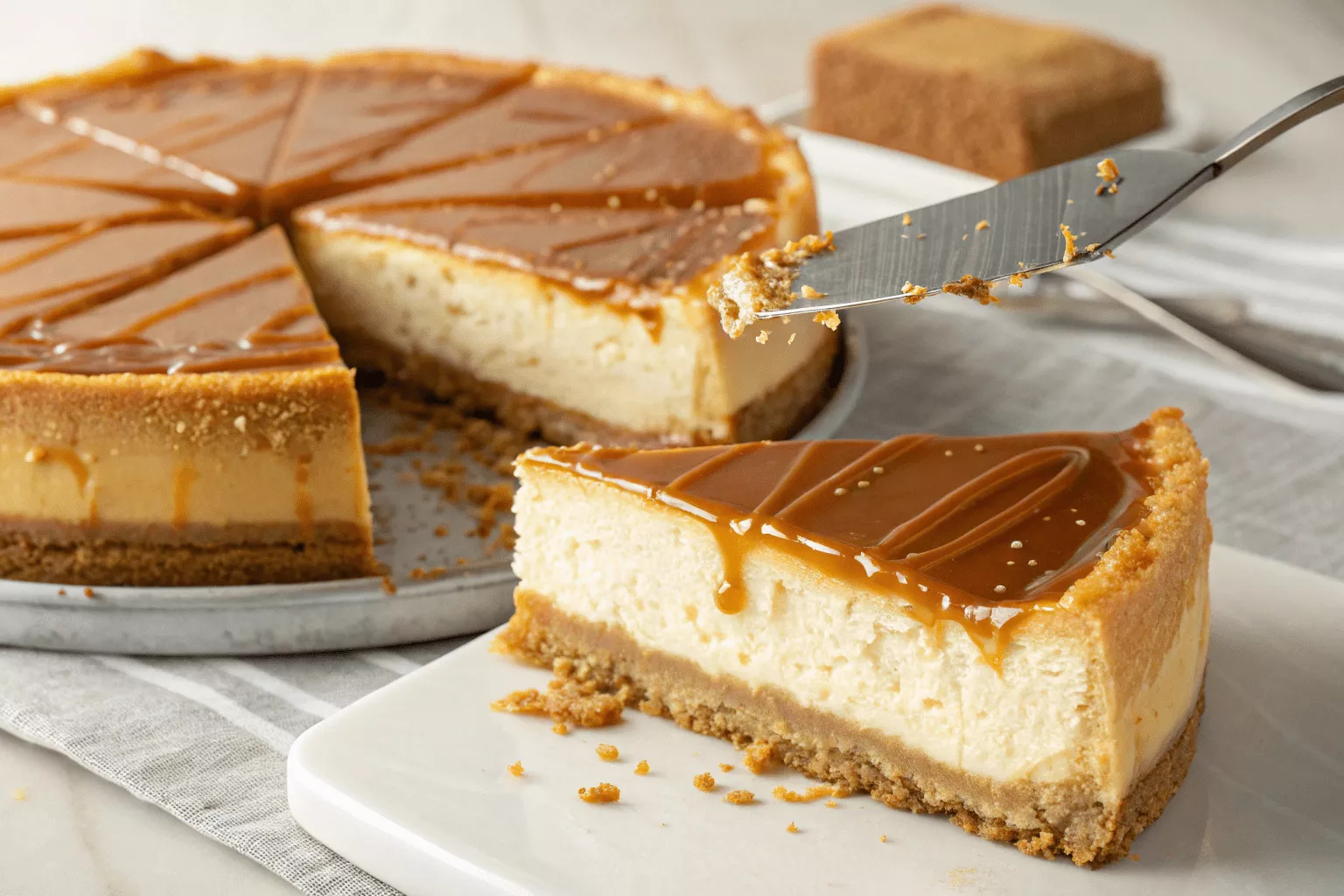This isn’t just another salted caramel cheesecake recipe – it’s the foolproof formula I’ve perfected over 15 years of professional baking that consistently produces the silkiest, most decadent cheesecake you’ll ever taste. My students at culinary school call it “life-changing,” and after making it for over 500 special occasions, I can confidently say this recipe has never failed.
What makes this salted caramel cheesecake extraordinary? It’s the triple-layer caramel experience: caramel swirled into the filling, a glossy caramel mirror glaze on top, and flaky sea salt that transforms every bite from simply sweet to absolutely sublime.
Table of Contents | Salted Caramel Cheesecake
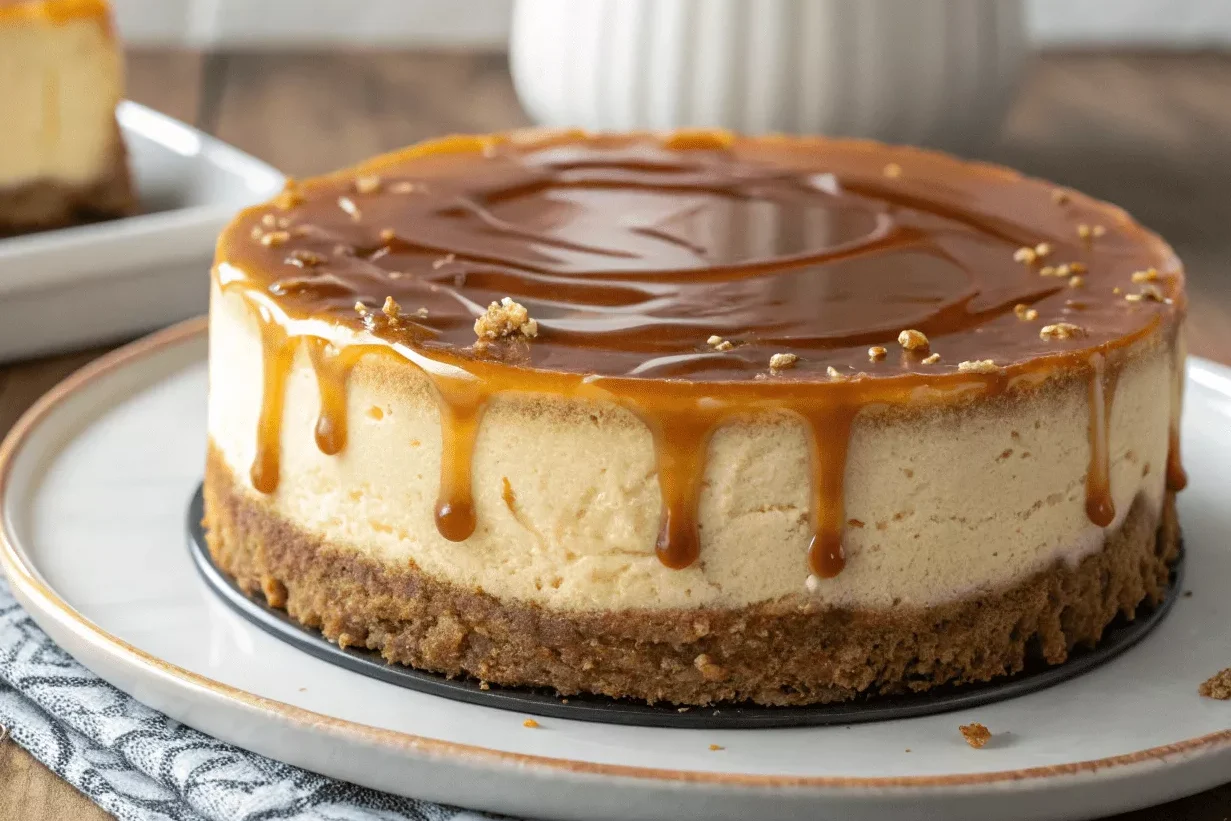
Why This is the Best Salted Caramel Cheesecake Recipe
After testing dozens of caramel cheesecake variations, this recipe consistently delivers three things that separate amateur from professional results:
Perfect Texture Every Time: My temperature-controlled mixing method eliminates the lumps, cracks, and dense texture that plague most homemade cheesecakes.
Balanced Caramel Flavor: Unlike recipes that rely solely on caramel sauce for cheesecake topping, I incorporate caramel at three different stages for complex, layered flavor that never overwhelms.
Professional Presentation: The mirror glaze technique creates that Instagram-worthy finish that looks like it came from a high-end bakery.
The Science Behind Perfect Caramel Sauce for Cheesecake
Most caramel sauce recipes fail because they don’t account for how caramel behaves when paired with dairy-rich cheesecake. Here’s my foolproof method that works every single time:
Temperature Control is Everything: I heat my sugar to exactly 340°F (170°C) – hot enough for deep caramel flavor but not so hot that it becomes bitter. Use a candy thermometer for precision.
The Secret Ingredient: A tablespoon of corn syrup prevents crystallization, ensuring your caramel stays silky smooth even after days in the refrigerator.
Timing the Dairy Addition: Add room-temperature heavy cream in a slow, steady stream while whisking continuously. Cold cream will cause the caramel to seize and become grainy – a mistake that’s nearly impossible to fix.
Salt Selection Matters: Use flaky sea salt (like Maldon) rather than table salt. The larger crystals provide bursts of salinity that enhance rather than compete with the caramel’s sweetness.
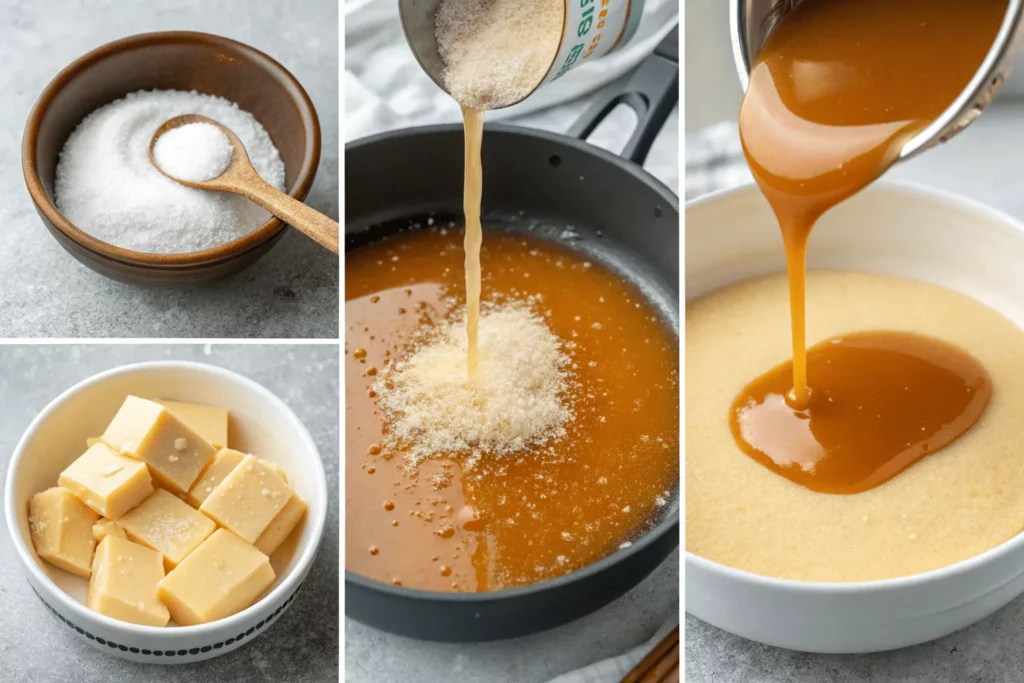
How to Make Restaurant-Quality Cheesecake Filling
The difference between good and extraordinary cheesecake lies in the mixing technique. Here’s my professional method:
The 3-Stage Mixing Process:
- Stage 1 – Cream Cheese Base: Beat cream cheese alone for 3 full minutes until completely smooth. This is crucial – any lumps now will be permanent.
- Stage 2 – Sugar Integration: Add sugar gradually over 2 minutes, allowing each addition to fully incorporate.
- Stage 3 – Gentle Addition: All remaining ingredients go in one at a time, mixing on lowest speed just until combined.
Room Temperature is Non-Negotiable: Every ingredient must be at 65-70°F (18-21°C). Cold ingredients create lumps and uneven mixing. My quick trick: place sealed cream cheese in warm water for 15 minutes and eggs in warm water for 5 minutes.
The Folding Technique: After machine mixing, use a large spatula to fold the batter from bottom to top 15-20 times. This eliminates air pockets that cause cracks and ensures silky texture.
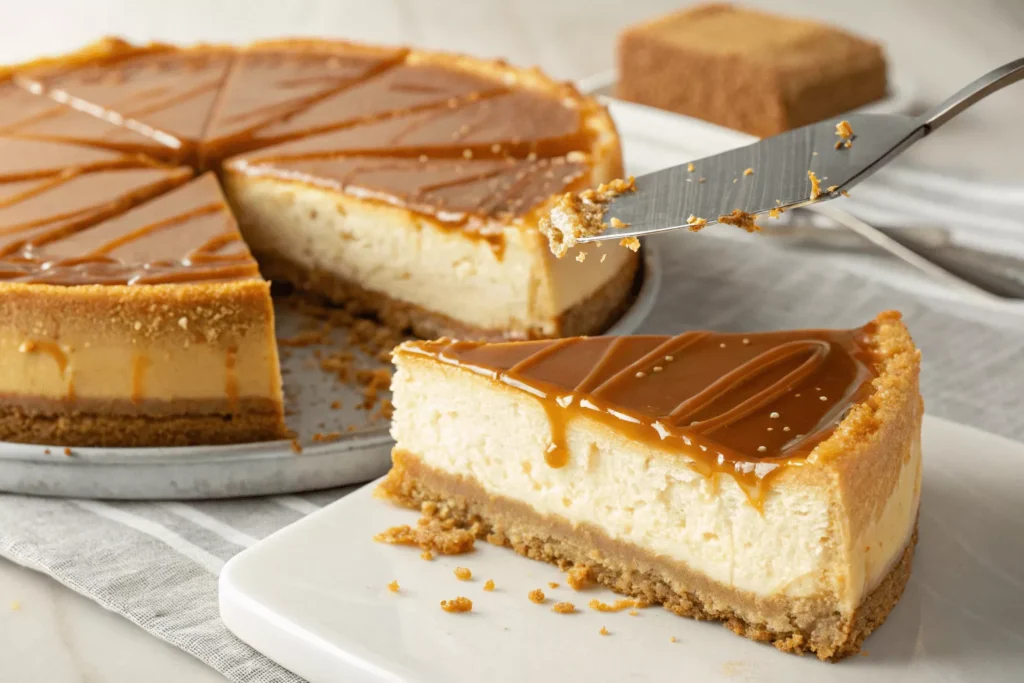
Advanced Baking Techniques for Zero Cracks
After baking thousands of cheesecakes, I’ve identified the exact conditions that prevent cracking:
The Water Bath Method: Place your springform pan inside a larger roasting pan. Pour boiling water halfway up the sides just before baking. This creates gentle, even heat that prevents the surface from drying out.
Temperature Gradation: Start at 325°F for the first hour, then reduce to 275°F for the final 25 minutes. This gradual reduction mimics professional convection ovens.
The Jiggle Test: Your cheesecake is done when the center has a gentle, uniform jiggle (like set custard) when you gently shake the pan. The edges should be slightly puffed but not cracked.
Controlled Cooling: Turn off the oven and crack the door for 1 hour, then remove and cool completely at room temperature before refrigerating. Rapid temperature changes cause cracks.
Creating the Perfect Caramel Mirror Glaze
This professional technique creates that stunning glossy finish you see in high-end restaurants:
Gelatin Stabilization: Bloom 1 teaspoon unflavored gelatin in cold water, then dissolve in warm caramel. This creates a glaze that sets beautifully and won’t run off.
Temperature Precision: Pour the glaze when it reaches exactly 90°F (32°C) – warm enough to flow smoothly but cool enough not to melt the cheesecake.
Application Technique: Pour from the center outward in a steady stream, allowing gravity to create the perfect coating.
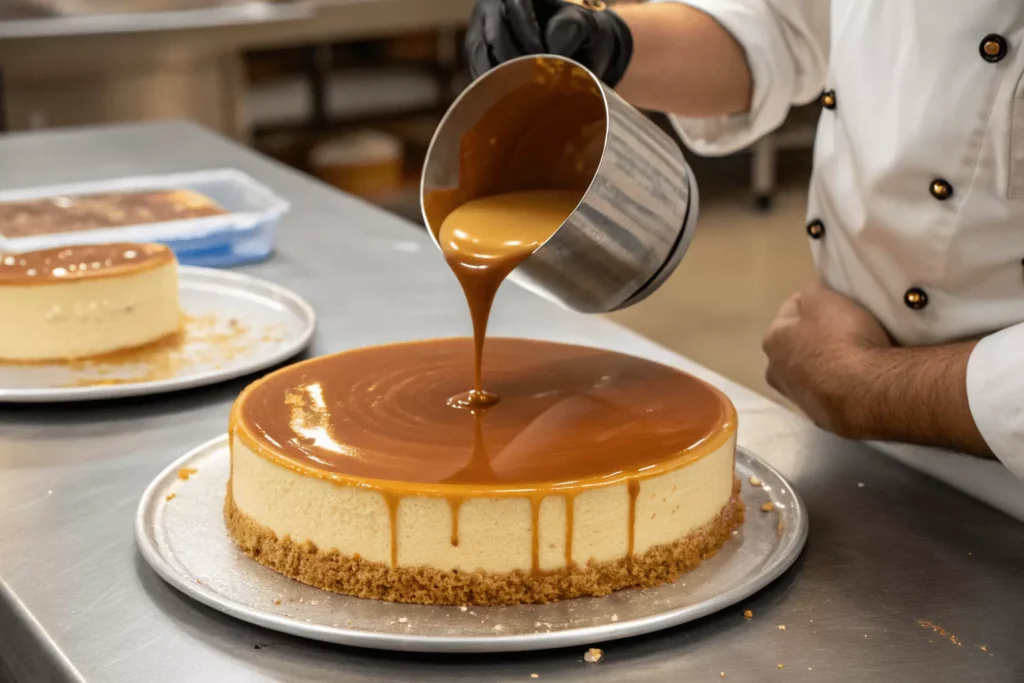
Troubleshooting Common Issues
Problem: Grainy caramel sauce Solution: Your sugar overheated or dairy was too cold. Start over with fresh ingredients at proper temperatures.
Problem: Cracked cheesecake surface Solution: Likely overbaked or cooled too quickly. Use the water bath method and controlled cooling process.
Problem: Dense, heavy texture Solution: Overmixed or cold ingredients. Follow the 3-stage mixing process with room-temperature ingredients.
Problem: Caramel sauce won’t stay on top Solution: Either the sauce is too thin (cook longer) or too thick (add warm cream). Aim for honey-like consistency.
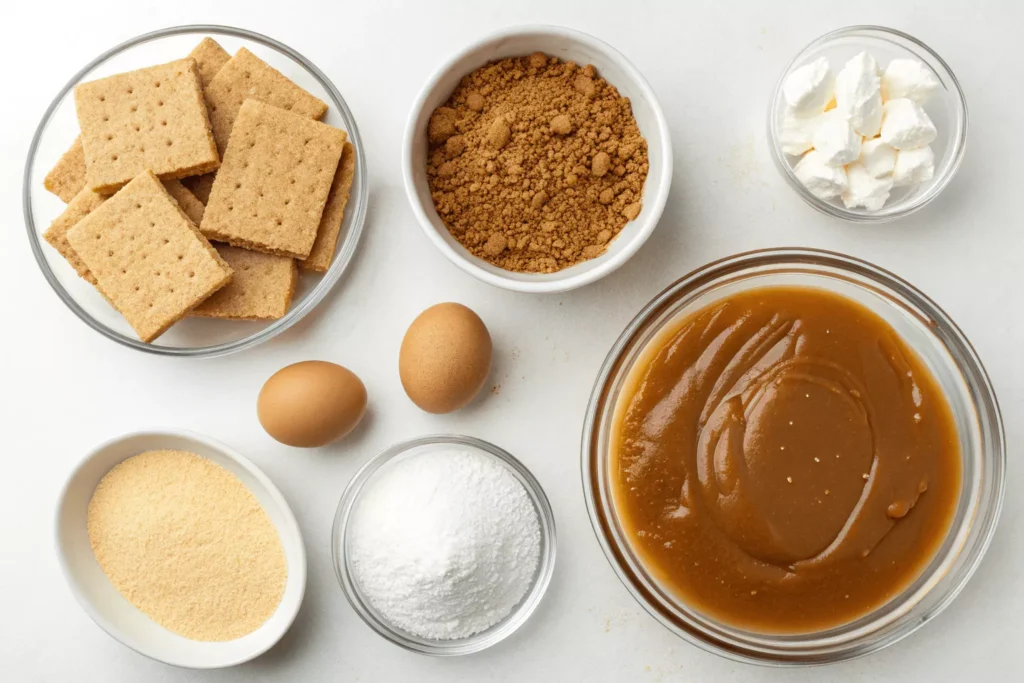
Complete Recipe for Caramel Cheesecake
For the Graham Cracker Crust:
- 2 cups graham cracker crumbs (about 16 crackers)
- 1/3 cup granulated sugar
- 6 tablespoons unsalted butter, melted
- 1/4 teaspoon salt
For the Salted Caramel Sauce:
- 1 cup granulated sugar
- 1 tablespoon light corn syrup
- 1/4 cup water
- 1/2 cup heavy cream, room temperature
- 3 tablespoons unsalted butter, room temperature
- 1 teaspoon vanilla extract
- 1 teaspoon flaky sea salt
- 1 teaspoon unflavored gelatin (for glaze)
For the Cheesecake Filling:
- 2 1/2 pounds cream cheese, room temperature
- 1 cup granulated sugar
- 1/4 cup all-purpose flour
- 4 large eggs, room temperature
- 1/2 cup sour cream, room temperature
- 2 teaspoons vanilla extract
- 1/3 cup prepared caramel sauce (cooled)
For Serving:
- Additional flaky sea salt
- Whipped cream (optional)
Step-by-Step Instructions |Salted Caramel Cheesecake
Prepare the Crust (15 minutes):
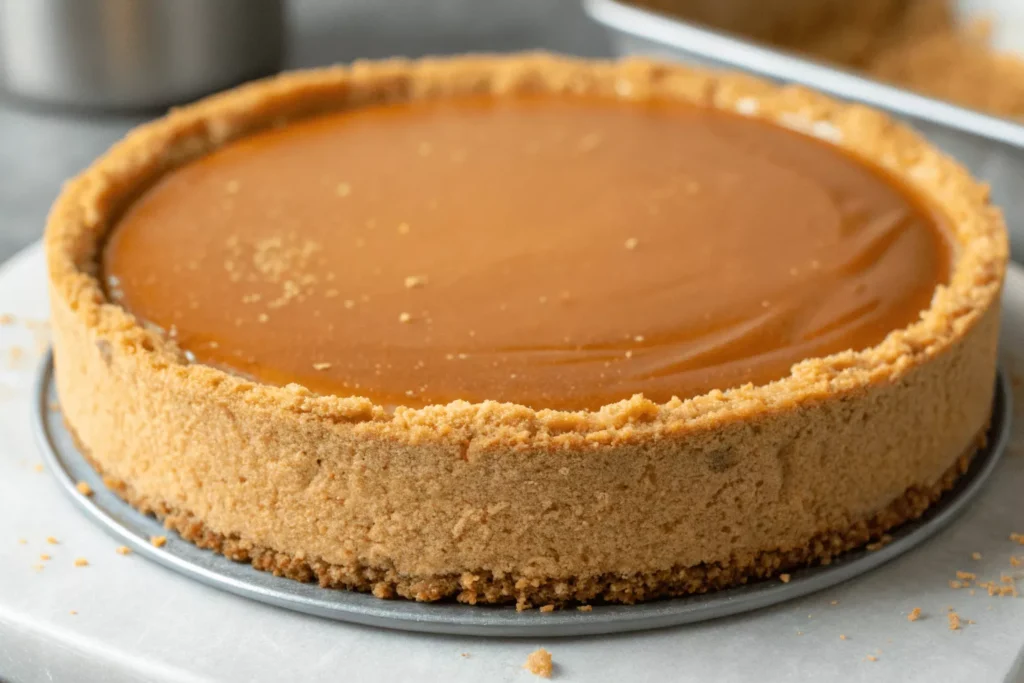
- Preheat oven to 350°F. Grease a 9-inch springform pan thoroughly.
- Combine graham cracker crumbs, sugar, melted butter, and salt until evenly moistened.
- Press firmly into bottom and 1 inch up sides of prepared pan.
- Bake 10 minutes until lightly golden. Cool completely.
Make the Caramel Sauce (20 minutes):
- In a heavy-bottomed saucepan, combine sugar, corn syrup, and water.
- Cook without stirring until mixture reaches 340°F and turns deep amber.
- Remove from heat and slowly whisk in cream, then butter, vanilla, and salt.
- Strain through fine-mesh sieve. Reserve 1/3 cup for filling; set remainder aside for topping.
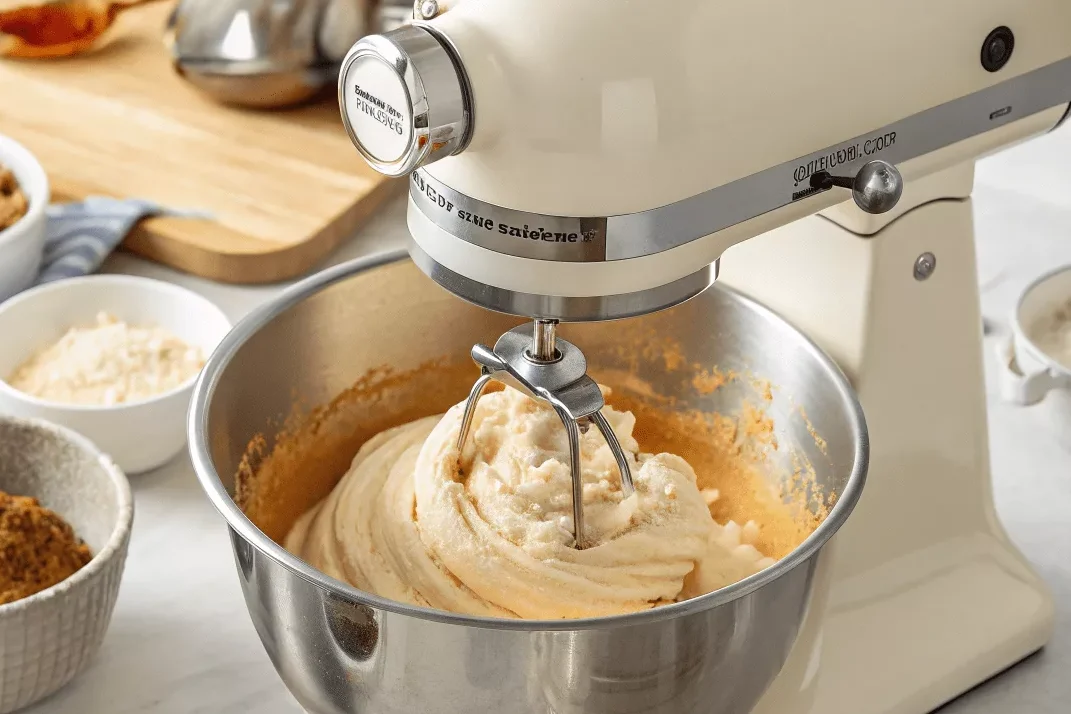
Prepare the Cheesecake (25 minutes):
- Reduce oven temperature to 325°F. Place roasting pan on bottom rack.
- Beat cream cheese for 3 minutes until completely smooth.
- Gradually add sugar, beating until fully incorporated.
- Mix in flour, then eggs one at a time, scraping bowl after each addition.
- Add sour cream, vanilla, and cooled caramel. Mix just until combined.
- Fold batter by hand 15-20 times to eliminate air pockets.
- Pour into prepared crust and smooth top.
Bake the Cheesecake (1 hour 25 minutes):
- Pour boiling water into roasting pan to reach halfway up springform pan sides.
- Bake 1 hour at 325°F, then reduce to 275°F for 25 minutes.
- Turn off oven and crack door for 1 hour.
- Remove and cool completely at room temperature (2 hours).
Create the Mirror Glaze (10 minutes):
- Bloom gelatin in 2 tablespoons cold water for 5 minutes.
- Heat reserved caramel sauce to 160°F, whisk in bloomed gelatin until dissolved.
- Cool to 90°F, then pour over center of cheesecake, allowing it to flow to edges.
- Refrigerate at least 4 hours or overnight.
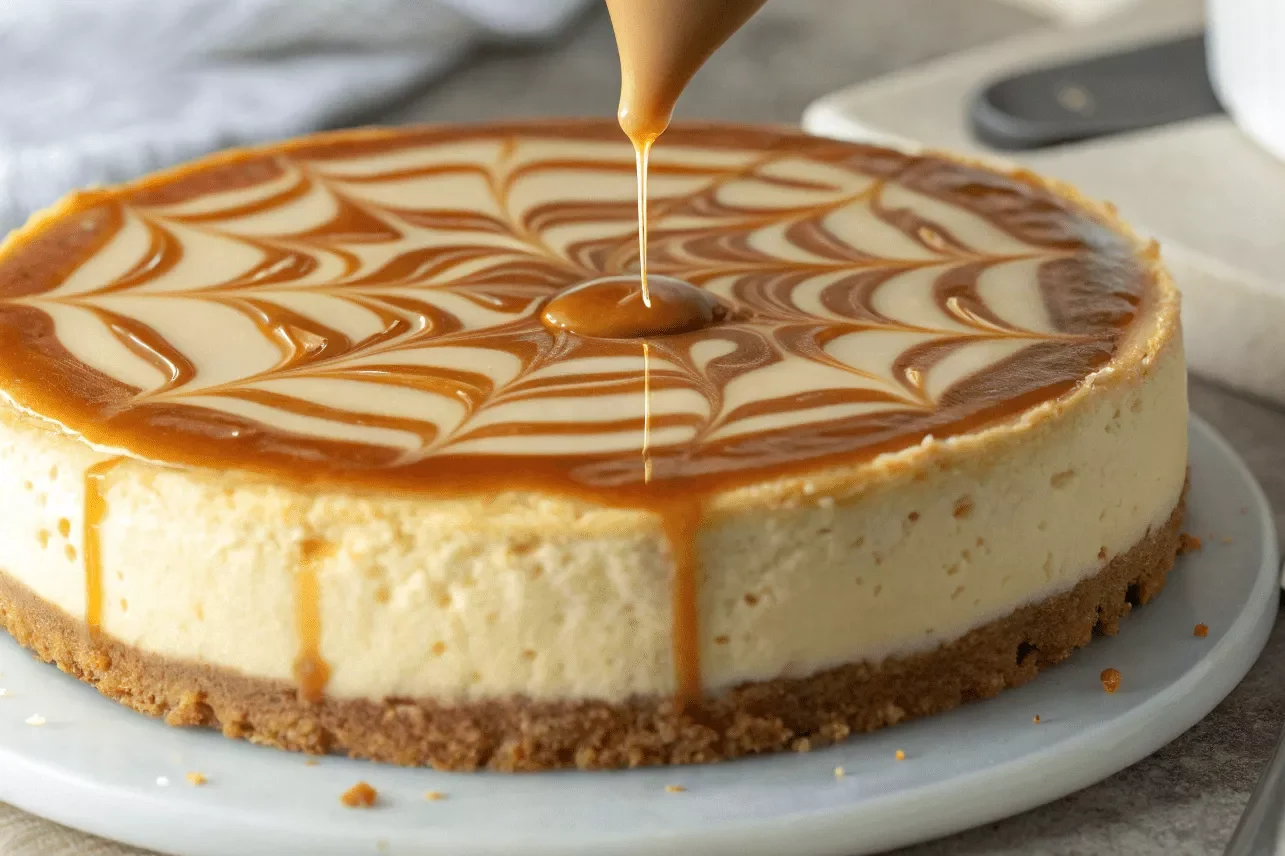
Serve and Store:
- Run a knife around edges and release springform sides.
- Sprinkle with flaky sea salt just before serving.
- Store covered in refrigerator up to 5 days.
- Serve slightly chilled for best texture and flavor.
Expert Tips for Success | Salted Caramel Cheesecake
Make Ahead Strategy: This recipe for caramel cheesecake actually improves after 24 hours as flavors meld. Make it a day before serving for optimal results.
Portion Control: Use a sharp knife dipped in warm water between cuts for clean slices that showcase the beautiful layers.
Flavor Variations: Try brown butter caramel for nuttiness, or add a pinch of cardamom for exotic warmth.
Storage Solutions: Wrap individual slices in plastic wrap – they freeze beautifully for up to 3 months.
Nutritional Information (Per Slice) | Salted Caramel Cheesecake
- Calories: 485
- Fat: 32g
- Carbohydrates: 45g
- Protein: 8g
- Sodium: 285mg
Frequently Asked Questions | Salted Caramel Cheesecake
Q: Can I make this caramel cheesecake without a water bath? A: While possible, the water bath is crucial for preventing cracks and ensuring even cooking. Without it, you risk a dry, cracked surface.
Q: How do I know if my caramel sauce for cheesecake topping is the right consistency? A: It should coat the back of a spoon and flow like warm honey. Too thick? Add warm cream. Too thin? Cook a bit longer.
Q: Can I substitute the cream cheese? A: For best results, use full-fat Philadelphia cream cheese. Lower-fat versions or substitutes will affect texture and may cause cracking.
Q: Why is my cheesecake dense instead of creamy? A: This usually results from cold ingredients or overmixing. Ensure everything is room temperature and follow the gentle mixing technique.
Related Recipes You’ll Love | Salted Caramel Cheesecake
- Classic New York Cheesecake with Berry Compote
- Chocolate Salted Caramel Tart
- Brown Butter Caramel Sauce (5 Ways)
- No-Bake Caramel Cheesecake Bars
Final Thoughts | Salted Caramel Cheesecake
This salted caramel cheesecake recipe represents years of refinement and testing. The combination of professional techniques with home-kitchen accessibility makes it perfect for both special occasions and whenever you crave restaurant-quality dessert.
The key to success lies in precision – follow the temperatures, timing, and techniques exactly as written for your first attempt. Once you master the basics, feel free to experiment with different salts, caramel intensities, or even flavor additions.
Remember, great cheesecake can’t be rushed. Allow the full chilling time for the flavors to develop and the texture to reach perfection. Your patience will be rewarded with a dessert that’s truly extraordinary.
Have you tried this recipe? Share your results in the comments below, and don’t forget to rate the recipe. Tag @livelydish on social media – I love seeing your beautiful creations!
for more recipes content:
follow us on : facebook and pintrest

